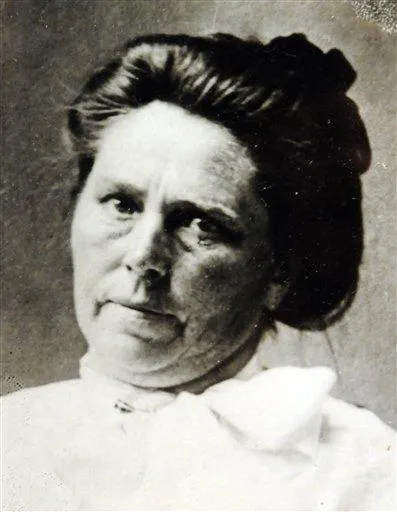When we think of serial killers, the image that often comes to mind is male. Yet history reveals chilling exceptions. Female serial killers are rare, but their stories are no less haunting. Often overlooked or misrepresented, these women used cunning, manipulation, and sometimes traditional caregiving roles to mask their crimes. Despite accounting for a fraction of serial murders, their motives and methods remain deeply unsettling, challenging many preconceived ideas about criminal behaviour. This post sheds light on some of the most infamous female serial killers in history, exposing their horrifying acts and the hidden stories behind them.
Understanding Female Serial Killers
Female serial killers are a chilling, though less common, counterpart to their male peers. Their rarity, coupled with their often concealed motives and methods, makes them a fascinating and unsettling subject to study. Unlike the stereotypical image of male serial killers driven by brutality or sexual desires, female killers often operate with precision, calculation, and a strikingly different set of psychological and societal factors influencing their actions.
Differences Between Male and Female Serial Killers
Male and female serial killers share the devastating trait of taking multiple lives, but their motives and methods often diverge significantly. Male killers commonly exhibit aggression and predatory behaviour, their crimes often driven by sexual desires or dominance. They are more likely to target strangers, executing their crimes with overt violence.
Female killers, by contrast, are often described as “quiet killers”. They tend to avoid physical confrontation, instead choosing methods such as poisoning, suffocation, or other covert tactics. Their victims are frequently individuals from within their own social circle—family members, spouses, or those under their care. The calculated yet personal nature of these crimes often hides their dark intentions behind socially accepted roles like caregiving.
Societal perceptions also play a pivotal role. Women have historically been viewed as nurturing and compassionate, stereotypes that work to their advantage in concealing their crimes. When women do commit serial murders, the public narrative often veers towards shock, disbelief, or even denial due to preconceived gender roles.
Common Motivations Behind the Crimes
Though each case is unique, researchers have identified several recurring motivations behind female serial killings. Here are the most prevalent:
- Financial Gain: Many female serial killers, often labelled as “Black Widows”, are driven by monetary profit. Their crimes might involve insurance fraud, inheritance claims, or theft from their victims, making this one of the most common motives.
- Revenge: Some women kill as an act of calculated vengeance, targeting individuals they perceive as threats or those who have wronged them.
- Mental Illness: While mental health issues are not exclusive to female criminals, certain conditions like Munchausen syndrome by proxy may influence some women to harm or kill for attention or sympathy, particularly in caregiving roles.
- Power and Control: Dubbed “Angels of Death”, some female killers derive psychological satisfaction from the power over life and death. This is especially common among healthcare workers who kill patients under their care.
- Survival: Historical cases reveal instances where killing was a woman’s means of self-preservation, especially in abusive or oppressive environments.
Despite these distinct motivations, it’s important to avoid oversimplifications. Not every female serial killer fits neatly into these categories, and societal and personal factors always intermingle to shape their actions.
Female serial killers remain a complex and often overlooked subject, and understanding their motives shines a light on societal assumptions and the darker corners of human psychology.
Infamous Female Serial Killers Throughout History
Throughout history, there have been women whose heinous crimes shook communities and left a dark mark on humanity. Far from fitting societal expectations, these women used manipulation, deceit, and sometimes violence to commit atrocities that remain infamous to this day. Below are the stories of five female serial killers who earned their place in the annals of true crime.
Belle Gunness: The Black Widow of the Midwest

Belle Gunness, born in Norway in 1859, relocated to the United States in search of a better life. But what followed was a chilling legacy of deceit and murder. Known as the “Black Widow of the Midwest,” Gunness lured wealthy men through personal ads in search of love—or so they thought. Upon arriving at her Indiana farmhouse, many of these unsuspecting men met a grim fate, either through poisoning, blunt force trauma, or staged accidents. Property deeds, cash, and valuables often vanished with the victims.
Reports suggest Gunness killed over 40 individuals between the 1880s and 1908, including her own children. When her farmhouse burned to the ground in 1908, authorities discovered scores of buried bodies on the property, but Belle herself disappeared—fueling theories that she faked her death to escape justice.
Aileen Wuornos: The Highway Killer

Aileen Wuornos had a deeply troubled past that shaped her violent actions. Born in Michigan in 1956, Wuornos endured a childhood of abuse and neglect before turning to prostitution as a teenager. In 1989 and 1990, Wuornos murdered seven men in Florida, claiming they had assaulted her. Each victim was shot at close range under circumstances she called self-defense.
Her case garnered widespread public attention due to her claims of victimhood and the societal lens of her being both a female serial killer and a sex worker. In 2002, Wuornos was executed in Florida. Her life remains a divisive topic, sparking debates about justice, mental health, and the biases women face in the criminal justice system.
Amelia Dyer: The Baby Farmer

Amelia Dyer, active in Victorian England, exploited one of the most vulnerable groups in society—infants. As a “baby farmer,” Dyer took in unwanted children that desperate mothers could not care for themselves. However, instead of providing the promised care, she would often murder the infants, disposing of their tiny bodies in the River Thames.
Authorities believe Dyer may have killed as many as 400 babies between 1879 and 1896, making her one of Britain’s most prolific murderers. Her arrest in 1896 led to public outrage and reforms in child welfare laws. The true horror of her crimes lies in her betrayal of trust and the systemic challenges that allowed her to operate for years undetected.
Judy Buenoano: The Black Widow

Judy Buenoano’s murderous spree was motivated by greed and financial gain. Convicted of killing her husband, son, and boyfriend, she earned the nickname “The Black Widow.” Buenoano often poisoned her victims with arsenic or manipulated circumstances to stage accidents. For example, she orchestrated the canoe drowning of her son, Michael, who had survived a suspicious poisoning only to later perish in the so-called “accident.”
Buenoano collected life insurance payouts after each death, but her luck ran out in 1983 when her attempt to kill her fiancé with a car bomb failed. Arrested and later convicted, she became the first woman to be executed in Florida in 150 years. Her case remains a chilling reminder of how far some individuals will go for money.
Gesche Gottfried: The Angel of Bremen

Gesche Gottfried was a master of deceit in early 19th-century Germany. Labelled the “Angel of Bremen,” she feigned compassion as she cared for loved ones suddenly beset by mysterious illnesses. In reality, she was administering a lethal mix of arsenic and fat, known as “mouse butter.” Between 1813 and 1827, she poisoned 15 people, including her parents, children, and even her fiancés.
Gottfried’s crimes were only discovered when her last victim fell ill but survived long enough to expose her. She was arrested, tried, and publicly executed in 1831—Germany’s last public execution. Her story continues to be studied as an example of how trust can act as a shield for monstrous deeds.
Methods Used by Female Serial Killers
Female serial killers often adopt methods that reflect stealth, calculation, and societal expectations of caregiving or nurturing. These women typically operate within personal or professional relationships, exploiting trust to gain access to their victims. Their techniques, while less physically violent than those of their male counterparts, are no less lethal. Two common themes emerge in their methods: the use of poisoning and the exploitation of trust.
Poisoning as a Preferred Method
Poisoning has historically been the weapon of choice for many female serial killers. Why? It’s discrete, requires minimal physical confrontation, and often leaves behind ambiguous causes of death. The ease of access to substances like arsenic and cyanide during certain periods in history made this method all the more convenient.
Take, for example, Belle Gunness, the infamous “Black Widow” of the Midwest, who was suspected of poisoning—and later bludgeoning—numerous victims to secure insurance payouts and property deeds. Similarly, Gesche Gottfried, the “Angel of Bremen,” killed at least 15 people using a mixture of arsenic and fat nicknamed “mouse butter.” These cases highlight how female serial killers relied on subtlety to evade suspicion for extended periods.
In most instances, the victims were individuals within close proximity of the killer, such as family members or co-workers. This approach allowed the perpetrator to maintain deniability, especially when victims displayed symptoms consistent with illness or natural causes. Poisoning also capitalises on societal assumptions that women, seen as nurturing caregivers, could not possibly be perpetrators of calculated murder.
Exploitation of Trust and Authority
Many female serial killers secured access to their victims by occupying roles of trust, such as caregivers, nurses, or even mothers. This dynamic allowed them to harm without raising immediate suspicion. They could operate undetected for years as their methods often mimicked natural causes.
Amelia Dyer, for instance, preyed upon society’s most vulnerable—infants. As a “baby farmer” in Victorian England, she promised to care for unwanted children but instead starved or suffocated them, profiting from their deaths through adoption fees. Similarly, “Angels of Death,” such as nurses like Jane Toppan, used their positions to poison patients with opiates for personal gratification or emotional satisfaction.
This exploitation also extended to familial or intimate relationships. Numerous “Black Widow” killers—named for their penchant for murdering spouses—leveraged their romantic connections to gain control over life insurance policies. Judy Buenoano, convicted of murdering her husband, son, and boyfriend, exemplifies this trend. She often staged deaths to look like accidents, such as drownings or illnesses exacerbated by arsenic poisoning.
This reliance on proximity and trust demonstrates how these killers manipulated societal perceptions of women’s inherent caregiving roles. These preconceptions often delayed investigations, allowing these crimes to persist and escalate.
Societal Impacts and Perceptions
The societal implications of female serial killers go beyond the grisly details of their crimes. They challenge ingrained stereotypes of femininity and caregiving, leaving society grappling with how to reconcile heinous acts with traditional gender roles. Public reactions, legal consequences, and media narratives often differ when a female, rather than a male, is revealed as a serial killer. Let’s examine two key aspects of their societal portrayal.
Media Representation of Female Serial Killers

Media plays a pivotal role in shaping how female killers are perceived. In many cases, female serial killers are framed differently than their male counterparts. The narratives often centre around gendered stereotypes, portraying women who kill as either monstrous anomalies or victims of uncontrollable circumstances.
Here’s how the media’s portrayal tends to differ:
- “Mad” or “Bad” Stereotypes: Women who commit serial murders are often categorised as either mentally unstable or inherently evil. Male serial killers, on the other hand, are more frequently characterised as methodical or calculating.
- Sensationalised Sexuality: Female perpetrators often have their crimes linked to their sexual lives in a way male killers do not. Terms like “black widow” or “seductress murderer” perpetuate this narrative, reducing them to caricatures of femme fatales.
- Romanticised Spectacle: Some female serial killers, such as Aileen Wuornos, have been the subject of movies that walk a fine line between informing and glamorising their atrocities.
The result? Media consumption can lead to a warped sense of empathy, blaming external factors more readily for women than for men in similar situations. This doesn’t just distort public perceptions—it can also affect real-world consequences in judicial, societal, and even victim impact contexts.
Legal and Punitive Responses
The treatment of female serial killers within historical and modern legal systems often reflects society’s expectations of women. Historically, women were often seen as incapable of the same “cold-blooded” reasoning attributed to men. While this perspective emerged from entrenched sexism, it resulted in courts either infantilising female perpetrators or demonising them based on societal outrage.
Here are key patterns in historical and current handling:
- Judicial Biases: Legal systems have often displayed biases in sentencing. Women found guilty might face harsher punishments as society grapples with the shock of their crimes conflicting with traditional femininity. Conversely, they may sometimes be perceived as victims themselves—of mental illness or systemic forces—allowing for lighter sentences.
- Punishments as Spectacle: Historical executions of women, such as Gesche Gottfried’s public beheading, often drew massive crowds, reflecting society’s morbid fascination with women who defied nurturing stereotypes. These events also symbolised a collective attempt to “correct” deviations from the expected feminine ideal.
- Modern Implications: Female serial killers today may still face differential treatment. For example, their motivations—such as financial gain or revenge—are often judged more harshly than the sexually motivated crimes historically associated with male serial killers.
The way society and the legal system react to female serial killers reflects broader conversations about gender. These cases push us to question how deeply ingrained perceptions shape everything—from media narratives to courtroom decisions. If anything, they expose deeply held biases that skew not only how these women are perceived, but how systems of power handle deplorable acts.
Why Research on Female Serial Killers is Limited
While male serial killers dominate public consciousness, female counterparts remain an understudied and often misunderstood facet of criminal psychology. Their stories are less publicised, but their crimes are no less devastating. Understanding why research on female serial killers is so limited requires examining societal biases, crime detection methods, and academic trends.
Male Dominance in Serial Killer Research
Research on serial killers has long been skewed toward male perpetrators. Why? Men are responsible for the vast majority of recorded serial killings, with studies estimating that they account for 89–95% of cases. This overwhelming statistic naturally steers attention and resources towards analysing male-driven motives, methods, and profiles.
Notably, law enforcement and criminologists have historically viewed violent crime through a male lens, often overlooking women as potential suspects in serial murder cases. Societal stereotypes surrounding women—such as being nurturing or less violent—further reinforce this bias. Such perceptions can lead to female serial killers flying under the radar for longer, even as they commit heinous crimes. For instance, female perpetrators often use slow, covert methods like poisoning, which make their actions harder to identify as serial killings.
Media representation plays a significant role here too. Male killers like Ted Bundy or Jeffrey Dahmer dominate popular culture, their crimes turned into documentaries and films. Female serial killers, by contrast, are either omitted or sensationalised in ways that diminish their reality. Nicknames like the “Black Widow” or “Angel of Death” draw more attention to gender dynamics than the crimes themselves, which can dilute serious academic focus.
This persistent focus on men means the psychology, motives, and patterns of female serial killers remain poorly understood—an oversight that affects profiling, prevention, and even historical records.
The Need for Future Studies
Given the nuanced and less-recognised patterns of female serial killing, there’s a pressing need for more comprehensive research. Where should we begin? Several key areas warrant investigation:
- Motivations: Unlike men, whose crimes often stem from control or sexual gratification, women typically kill for financial gain or vengeance. Understanding how societal pressures and gender roles influence these drives is crucial.
- Methods and Detection: Female serial killers often exploit roles that grant them trust—such as caregivers or medical professionals. Their chosen methods, like poisoning or smothering, may mimic natural deaths, delaying detection. Studies should examine why these patterns emerge and how systems could adapt to spot them sooner.
- Socio-Cultural Factors: Historical and cultural contexts shape how female serial killers operate and how they are perceived. Exploring past cases through this lens may reveal overlooked killers and provide a clearer picture of gendered crime trends.
- Impact of Biases in Law Enforcement: How many women have been dismissed as suspects due to gender biases? Investigating how these oversights shaped both individual cases and broader criminal patterns could help prevent similar errors in the future.
- Comparative Analysis: Directly comparing male and female serial killers through a gender-neutral framework could yield insights into how motives, methods, and detection rates differ, enabling more accurate profiles of both.
Expanding research into female serial killers isn’t just about equity in academic study—it’s about understanding how to protect potential victims and dismantling myths that hinder fair and effective criminal investigation. The more we study, the clearer the patterns become, and the easier it is to prevent future tragedies.
Conclusion
Female serial killers challenge societal norms, exposing the darker side of humanity shrouded in calculated deception. While less common than male counterparts, their crimes reveal strikingly different methods, motivations, and societal impacts. These women committed heinous acts, often using trusted roles to manipulate and destroy.
Understanding their psychology offers critical insights into wider societal biases, especially surrounding gender and criminal behaviour. More research is crucial to uncover patterns that remain overlooked due to stereotypes about women’s capacity for violence.
What do these cases tell us about humanity’s assumptions? Share your thoughts, and let’s continue exploring the complexities of crime and psychology.
Be sure to check out our other Blog posts! and find us on YouTube for the best creepypasta stories.

